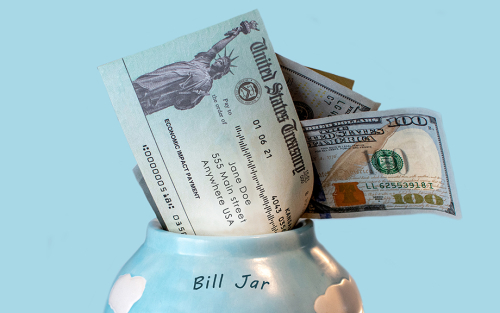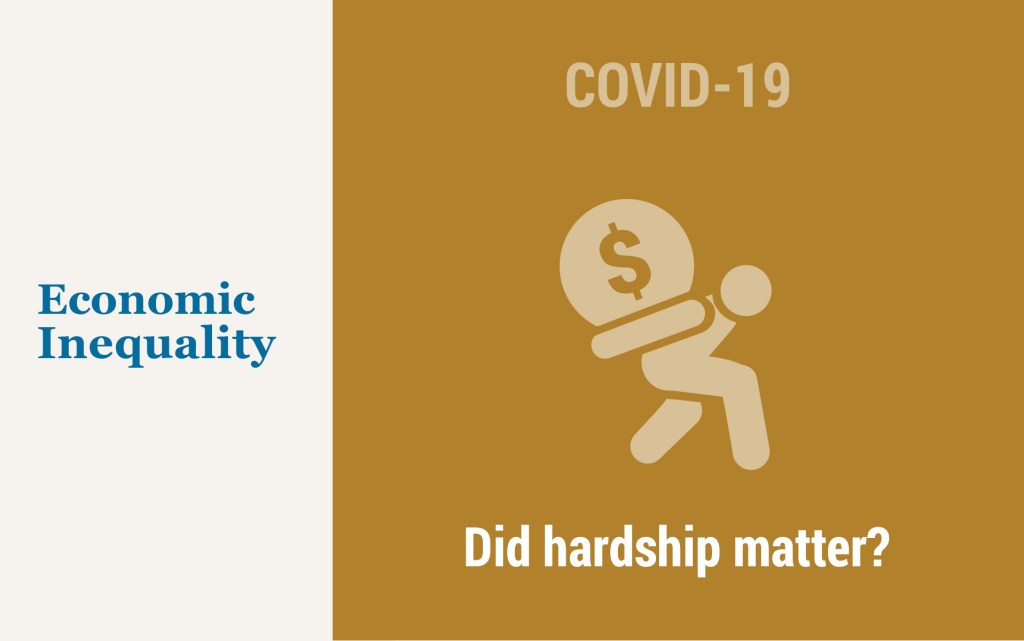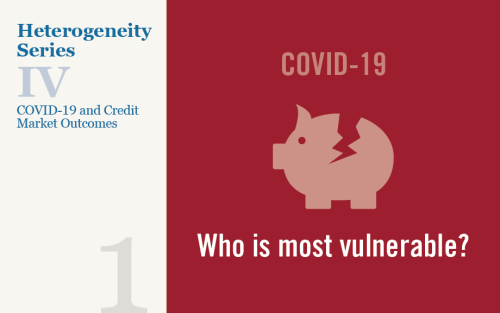Not Just “Stimulus” Checks: The Marginal Propensity to Repay Debt

Households frequently use stimulus checks to pay down existing debt. In this post, we discuss the empirical evidence on this marginal propensity to repay debt (MPRD), and we present new findings using the Survey of Consumer Expectations. We find that households with low net wealth-to-income ratios were more prone to use transfers from the CARES Act of March 2020 to pay down debt. We then show that standard models of consumption-saving behavior can be made consistent with these empirical findings if borrowers’ interest rates rise with debt. Our model suggests that fiscal policy may face a trade-off between increasing aggregate consumption today and assisting those with the largest debt balances.
What Drove Racial Disparities in the Paycheck Protection Program?

Numerous studies of the Paycheck Protection Program (PPP), which provided loans to small businesses during the COVID-19 pandemic, have documented racial disparities in the program. Because publicly available PPP data only include information on approved loans, prior work has largely been unable to assess whether these disparities were driven by borrower application behavior or by lender approval decisions. In this post, which is based on a related Staff Report and NBER working paper, we use the Federal Reserve’s 2020 Small Business Credit Survey to examine PPP application behavior and approval decisions and to study the strengths and limitations of fintech lenders in enhancing access to credit for Black-owned businesses.
An Update on How Households Are Using Stimulus Checks

In October, we reported on how households used their first economic impact payments, which they started to receive in mid-April 2020 as part of the CARES Act, and how they expected to use a second stimulus payment. In this post, we exploit new survey data to examine how households used the second round of stimulus checks, abd we investigate how they plan to use the third round.
A Monthly Peek into Americans’ Credit During the COVID‑19 Pandemic

Total household debt was roughly flat in the second quarter of 2020, according to the latest Quarterly Report on Household Debt and Credit from the New York Fed’s Center for Microeconomic Data. But, for the first time, the dynamics in household debt balances were driven primarily by a sharp decline in credit card balances, as consumer spending plummeted. In an effort to gain greater clarity, the New York Fed and the Federal Reserve System have acquired monthly updates for the New York Fed Consumer Credit Panel, based on anonymized Equifax credit report data. We’ve been closely watching the data as they roll in, and here we present six key takeaways on the consumer balance sheet in the months since COVID-19 hit.
Inflation Expectations in Times of COVID‑19

As an important driver of the inflation process, inflation expectations must be monitored closely by policymakers to ensure they remain consistent with long-term monetary policy objectives. In particular, if inflation expectations start drifting away from the central bank’s objective, they could become permanently “un-anchored” in the long run. Because the COVID-19 pandemic is a crisis unlike any other, its impact on short- and medium-term inflation has been challenging to predict. In this post, we summarize the results of our forthcoming paper that makes use of the Survey of Consumer Expectations (SCE) to study how the COVID-19 outbreak has affected the public’s inflation expectations. We find that, so far, households’ inflation expectations have not exhibited a consistent upward or downward trend since the emergence of the COVID-19 pandemic. However, the data reveal unprecedented increases in individual uncertainty—and disagreement across respondents—about future inflation outcomes. Close monitoring of these measures is warranted because elevated levels may signal a risk of inflation expectations becoming unanchored.












 RSS Feed
RSS Feed Follow Liberty Street Economics
Follow Liberty Street Economics